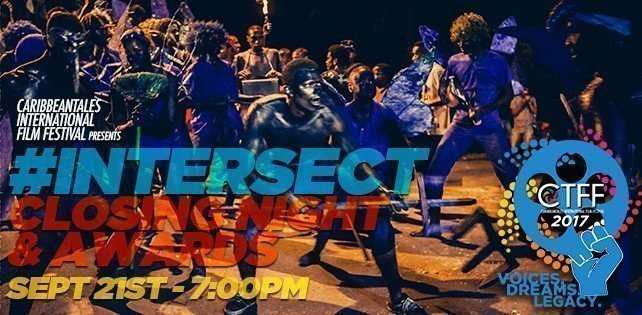BY: LEANNE BENN
It was an exciting and glamorous end for the Caribbean Tales Film Festival 2017. Eager supporters, film enthusiasts, filmmakers and people with diverse backgrounds all made their way to the closing night ceremony of CTFF 2017 at the Scotiabank Cineplex downtown Toronto. The evening was more than just a celebration of all the films at this years’ festival but a poignant recognition of the well deserving filmmakers that contributed their art to the festival.
The overall theme for 2017 was Caribbean Legacy and featured films from about eighteen different countries, not just in the Caribbean but worldwide. The CTFF’s aim is to promote the art of film, by expressing diversity and cultural awareness. The closing night on September 21st marked another success for this year’s festival. The theme for the night was #Intersect: QTPOC (queer and trans people of colour) and featured an evening that honoured LGBT films. This special screening pointed to the diversity included in the CTFF hub and what they have continued to do over the past seven years. The three films screened were Play the Devil by Maria Govan, A Broken Appointment by Kaleb D’Anguillar and E Yobida di Ayera by Armand Simon. These films created a special place to highlight gay, lesbian, bisexual and transgender topics in the Caribbean community that may go by unnoticed or placed under a certain taboo.
By providing this platform for creative expression, CTFF has allowed for an intersection of voices with the Caribbean diaspora and people of color in the LGBT communities. As the CEO of Caribbean tales, Frances-Anne Solomon remarked, “When we first started, we actually had sponsors and partners in the community who would ask us not to mention our queer programming. These last few years have been a huge and beautiful change. We couldn’t be more proud of the audiences we have brought to this work, to be showcasing this work, and to be telling these stories.”
This intersection of identity helps to make the Caribbean region stronger as they focus on freedom and self-identity when it comes to the LGBT community. The screening of the film was also followed by a special talkback hosted by activist and writer, Kim Katrin Milan in the QTPOC community.
This was far from the end of the festivities. CTFF held their special award ceremony to recognize all the films in this year’s festival and to select the very best from certain key categories. Including best cinematography and best documentary. Highlights from the awards included, Best Documentary- Traces of Sugar by Ida Does, Best Short Film- Vire by Hugo Rousselin, Best Cinematography- Cutlass by Darisha Beresford and Innovation Award- Kafou by Bruno Mourral. There was also a special award for the special theme of #Intersect. The Intersect Award for Best LGBT Film was awarded to Play The Devil by Maria Govan.
Overall this festival was pleasing as it marked another year of compassionate feedback from the local Toronto audience and people of the Caribbean region and diaspora. This was also a time for emerging filmmakers to make their mark and to learn from other winners as well. The exposure in the Toronto community also contributes to the growth of the festival, as each year there is always something bigger and dynamic added.
Highlights from the overall festival included hosting Caribbean celebrities, such as Machel Montano and the screening of his documentary entitled, Journey of a Soca King and getting support from the Soca Queen herself, Alison Hinds. Honorable speakers from all over the Caribbean islands and even those in Toronto.
In closing, Solomon remarked, “We knew we had a great festival while we were creating it, but the end results were simply amazing! We want to thank, the thousands of people who supported us in Toronto, and we want to let them know we are already looking towards 2018, our lucky 13th festival when we will again bring stories from the Caribbean region to sell-out audiences.”
As mentioned the 2018 festival will be the 13th celebration for this brand many filmmakers can read up on the guidelines requirements before submitting a film as well as stay up to date for future events. Be sure to support and check out future events for Caribbean Tales in Toronto and around the Caribbean. Visit, CaribbeanTales Festival.com

